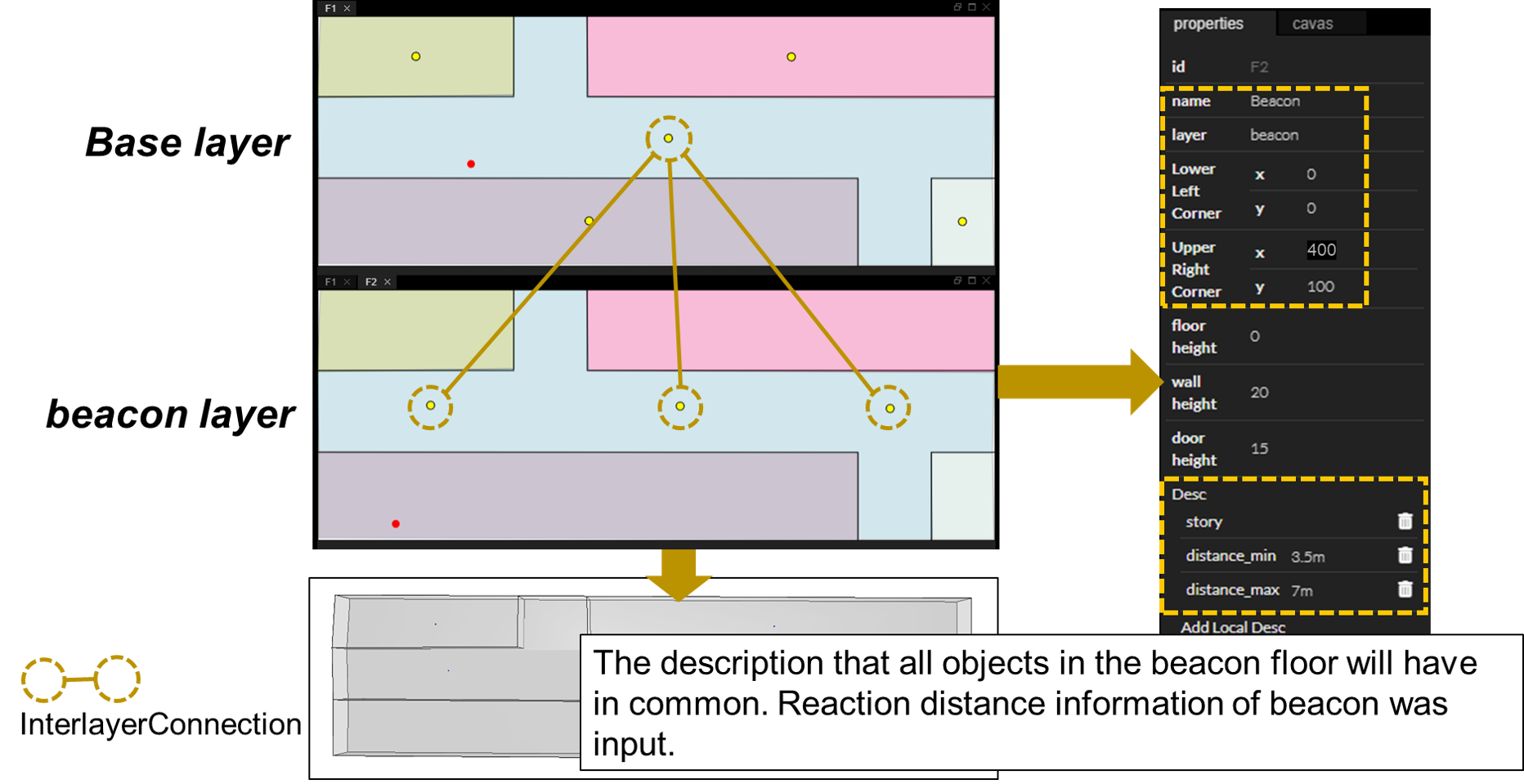-
Notifications
You must be signed in to change notification settings - Fork 17
Case By Case
Depending on whether the wall is thick, it can be classified into the Thick or Thin model. If the wall has a significant thickness, the Thick model can be used for it. And if it is a paper wall, then the Thin model can be used.
| Thick | Thin | |
|---|---|---|
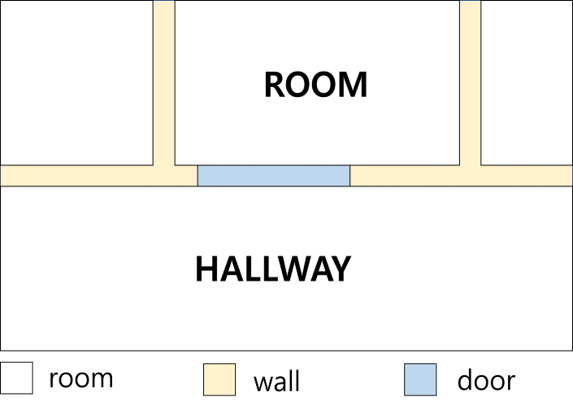 |
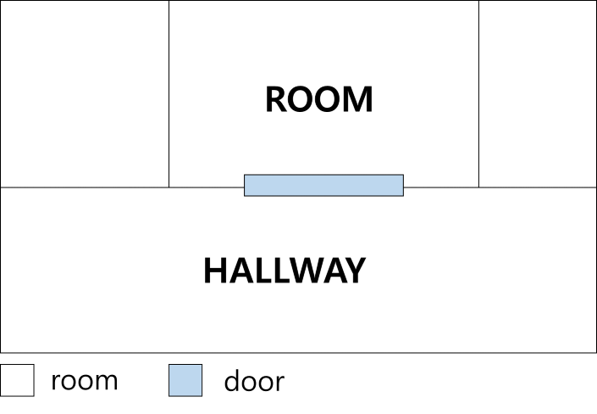 |
|
| door | Define as a CellSpace and define CellSapceBoundry on the side that touches another CellSpace. | Define as a CellSpaceBoundary on the intersection of the different CellSpaces. |
| wall | Do not allocate space on the wall. Or define as a CellSpace with no state. |
The boundary of the CellSpace defined as the room serves as the wall. |
| InEditor | 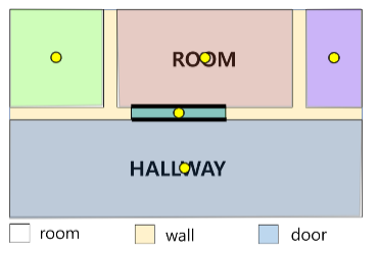 |
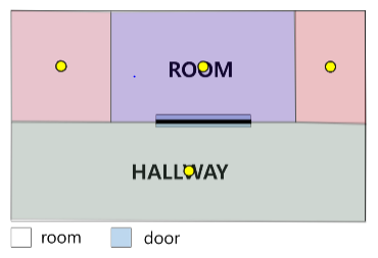 |
| InViewer | 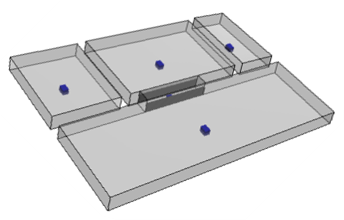 |
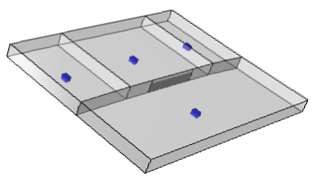 |
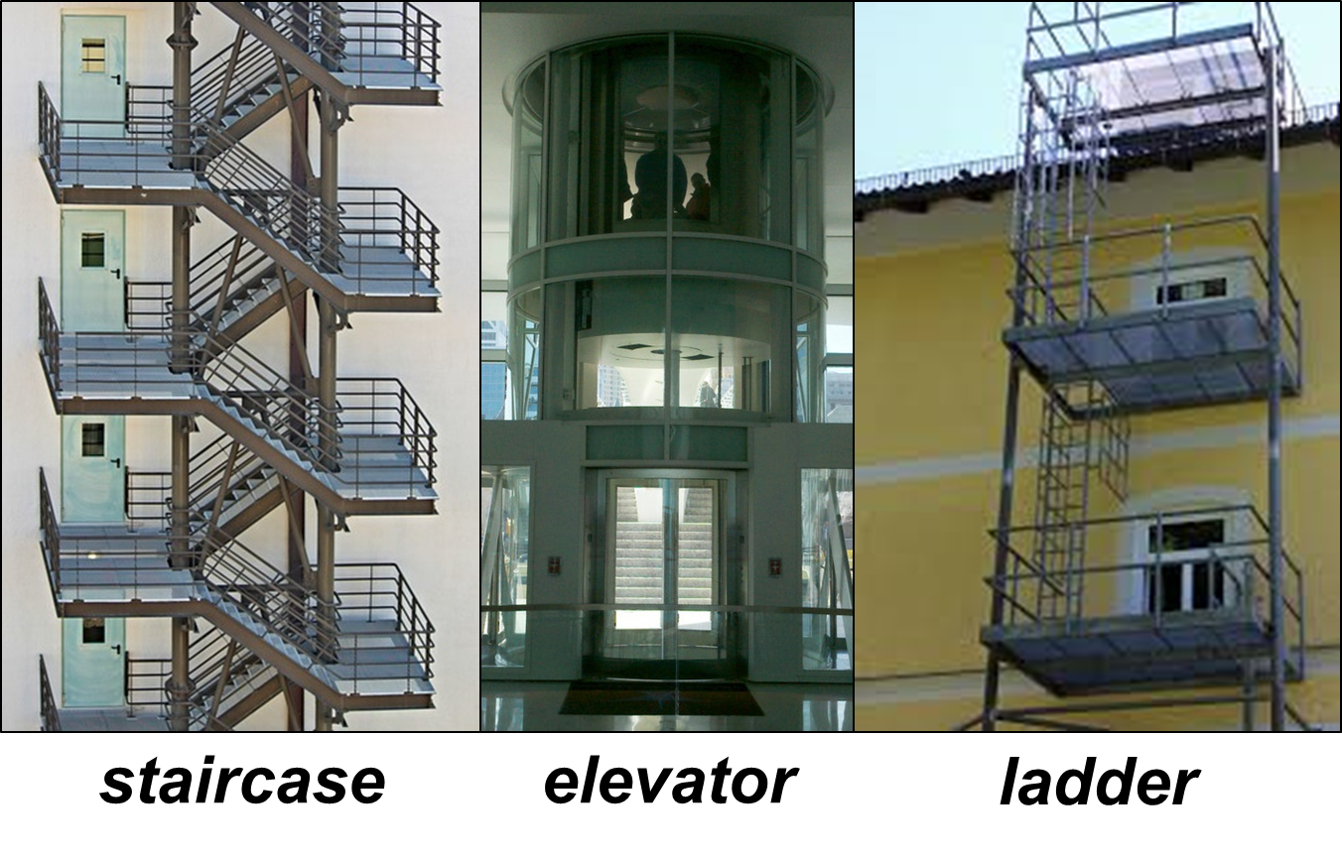
These three spaces are the area allocated for the vertical movement. Therefore, although the concrete form of each space is different, functionally all three spaces can be regarded as the same as the staircase.
-
Abstract with IndoorGML representation
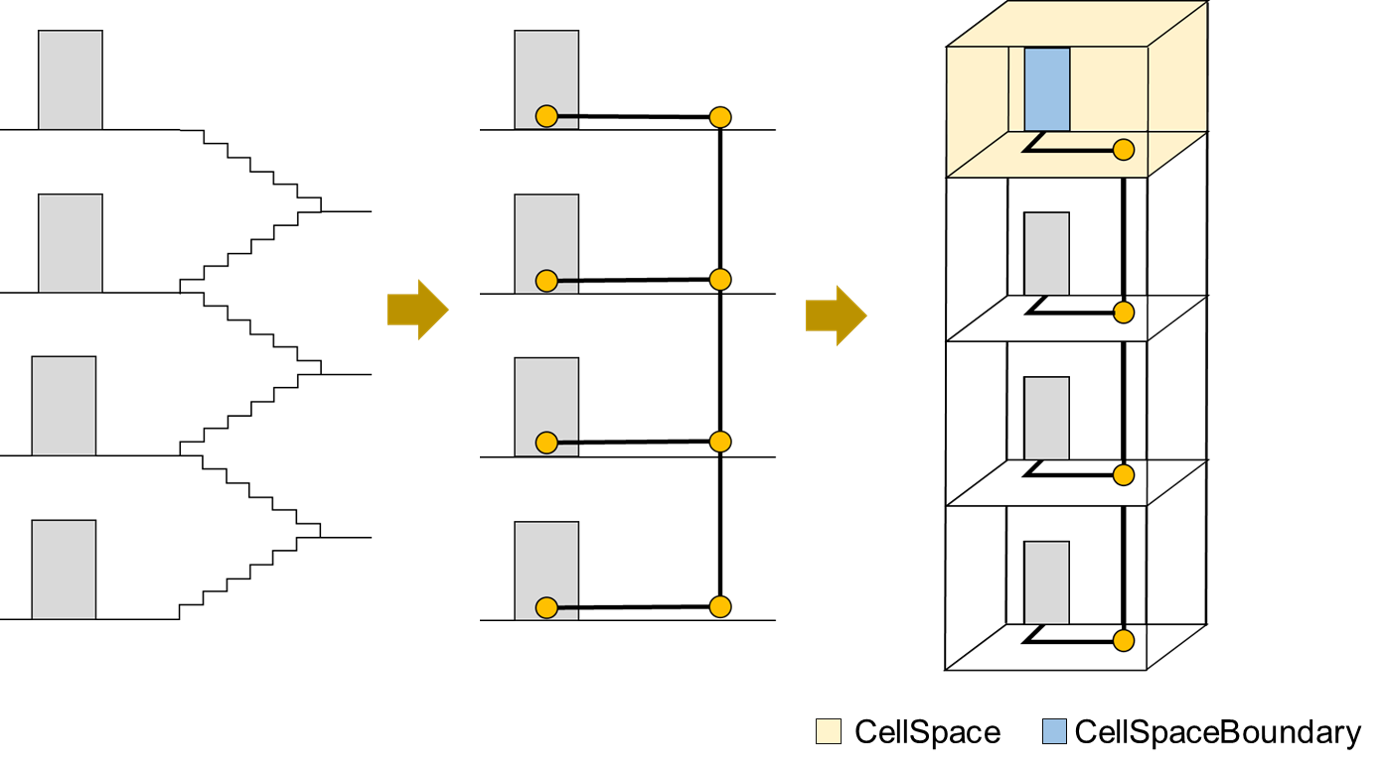
-
Creating an IndoorGML file with InEditor
| Goal | InEditor | InViewer |
|---|---|---|
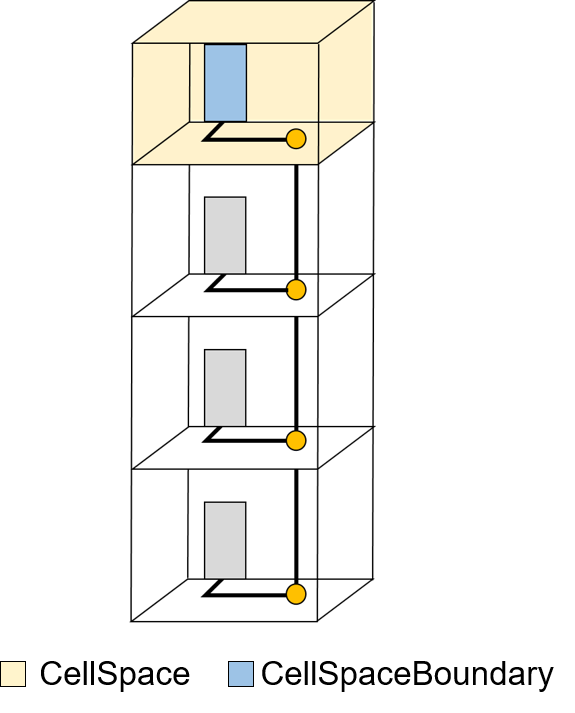 |
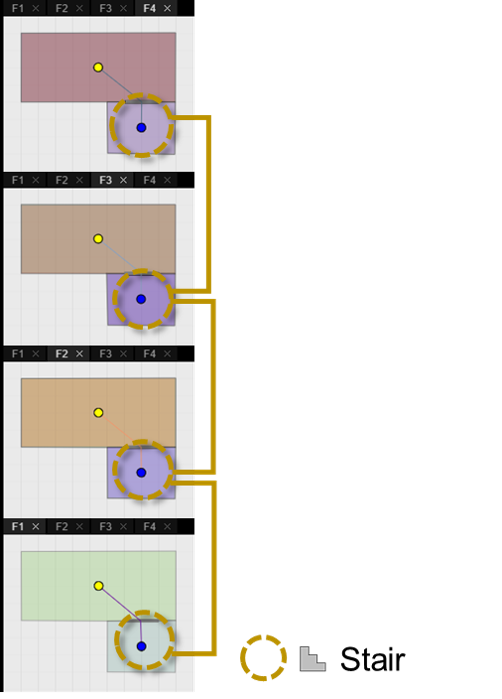 |
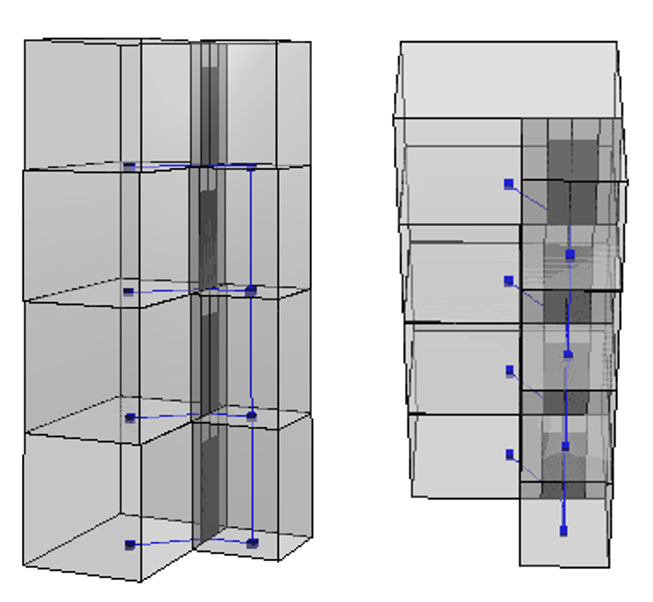 |
| stair#1 A single-storey stair | stair#2 Single-storey stair with available space | stair#3 A continuous stair |
|---|---|---|
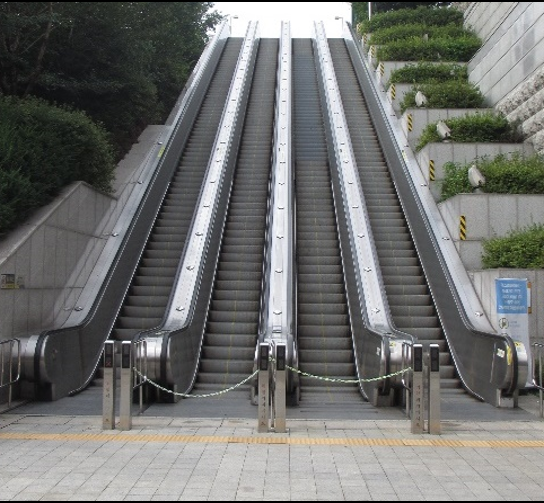 This stair consists of an upper and lower part. The upper part is where the people pass and the lower part is not used. A stair like this can be defined as a cube shape CellSpace or can be defined only the upper part as a CellSpace with a slant. |
 In this case, people can move around the lower part of the stair different from stair#1. So two different CellSpace with slant should define for this space. |
 This type can be found on escalators and stairs in multi-story buildings. This can be defined as a continuous paste of Stair# 2. |
- Abstract with IndoorGML representation
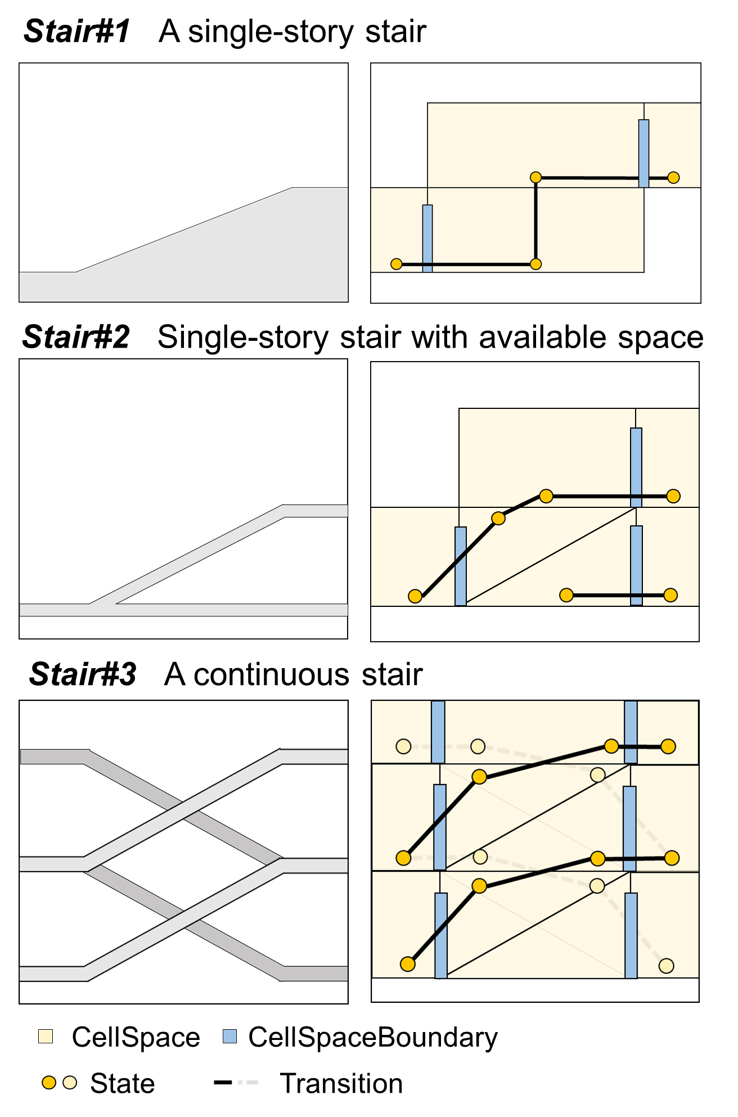
- Creating an IndoorGML file with InEditor
| Type | Goal | InEditor | InViewer |
|---|---|---|---|
| Stair#1 | 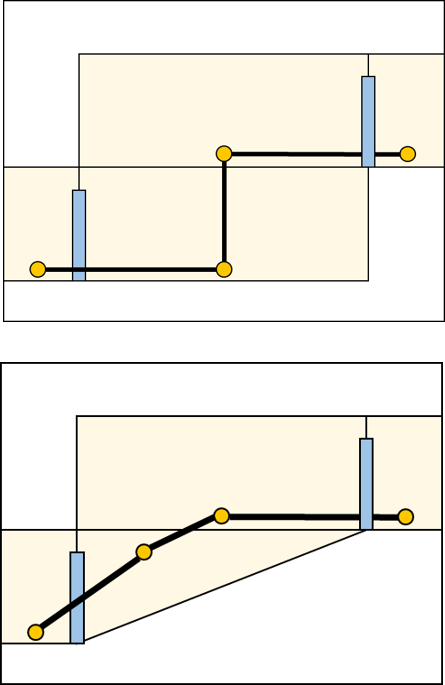 |
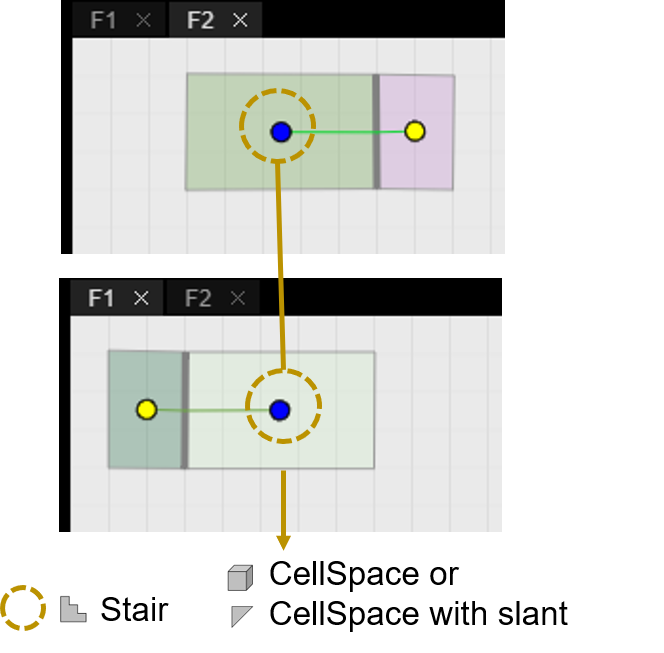 |
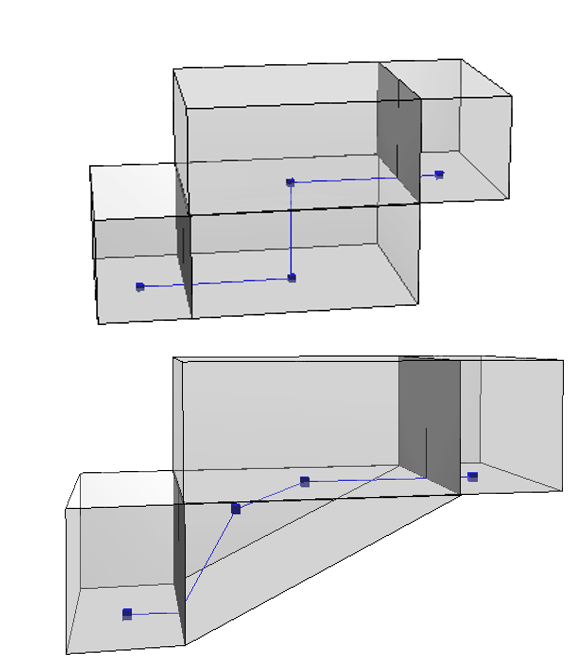 |
| Stair#2 | 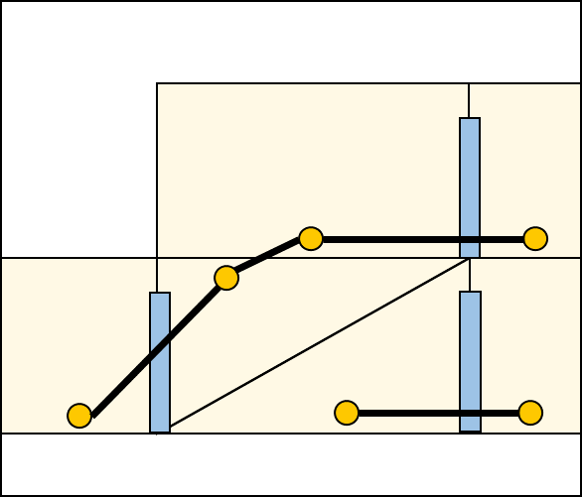 |
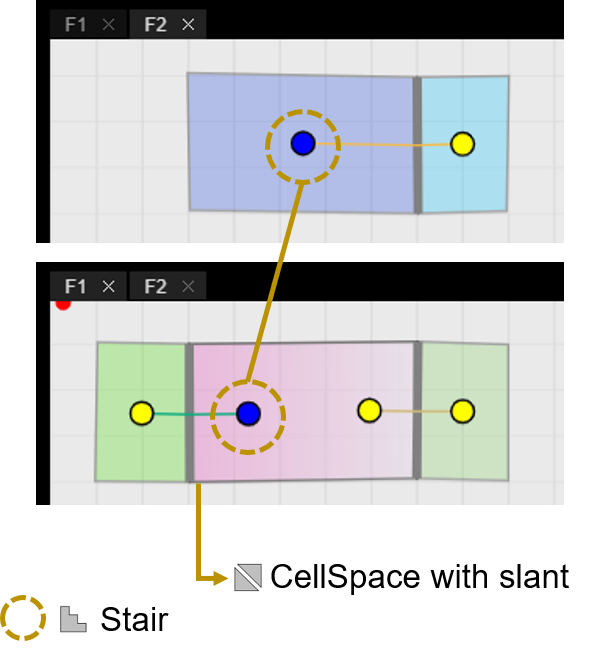 |
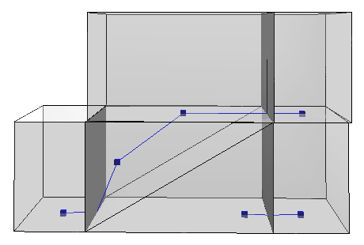 |
| Stair#3 | 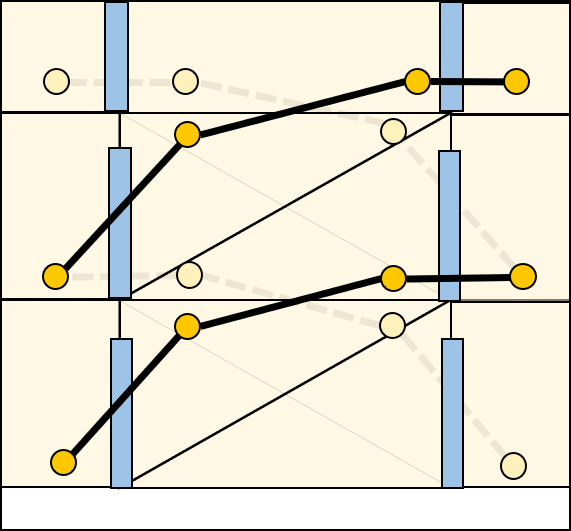 |
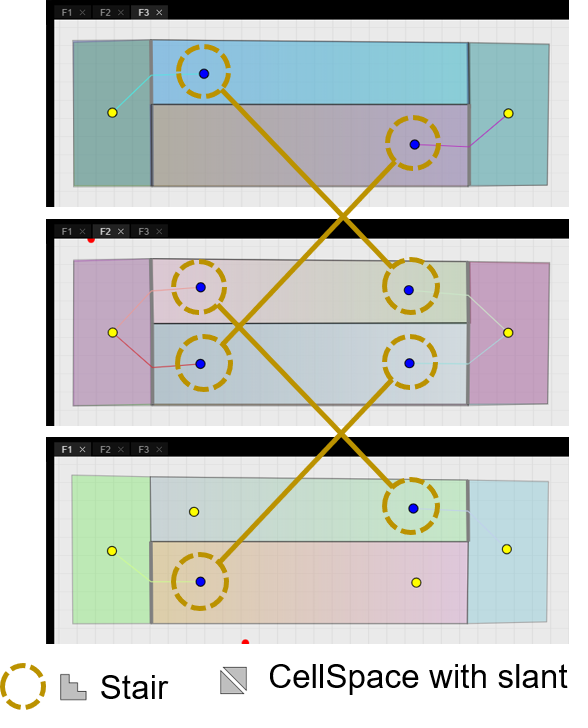 |
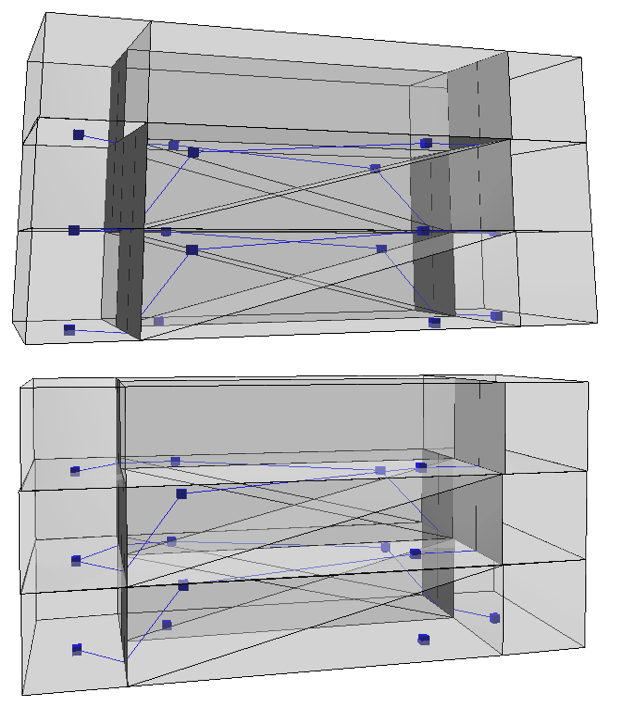 |
Multilayer can be used to express the characteristics of interior space more variously. In this part, we will look at how to express Hierarchical Structure, Fine Network, and POI using Multilayer.
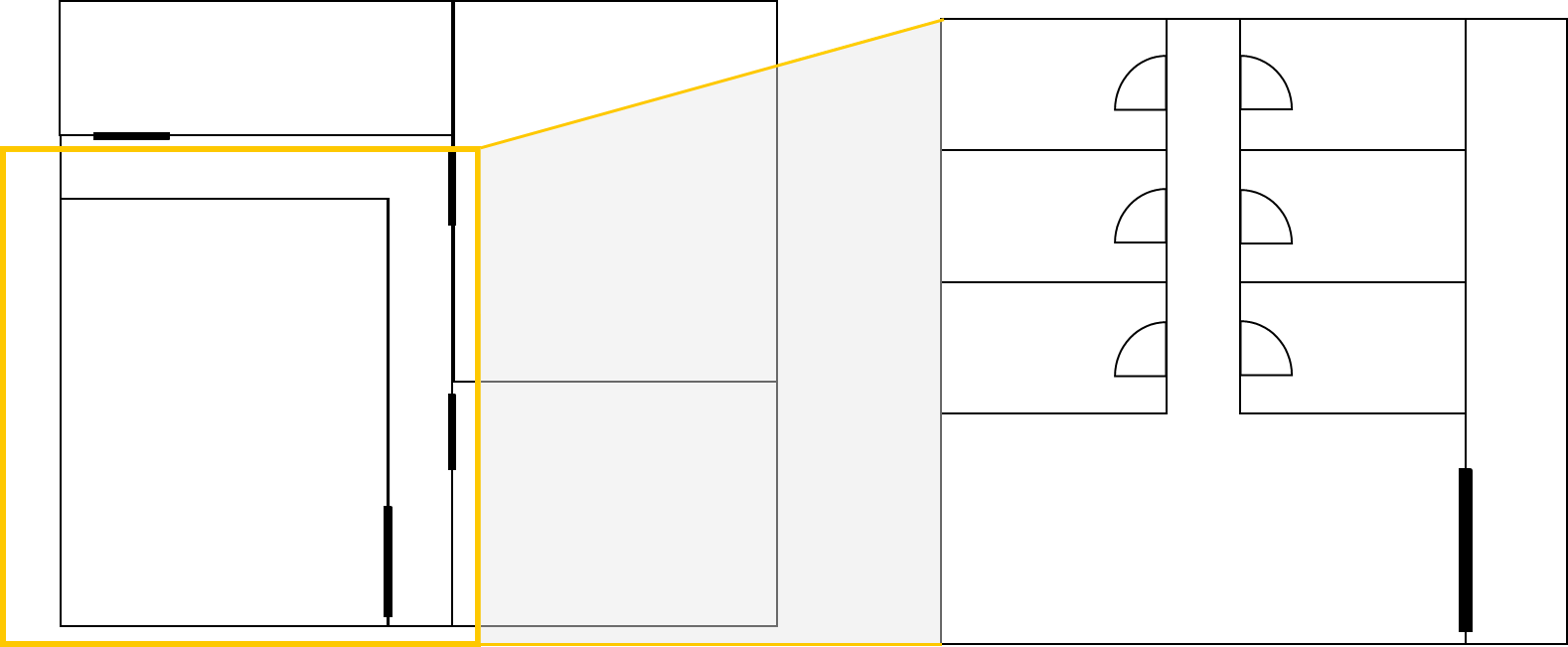
By separating the upper layer and the lower layer, it is possible to represent a larger range of structure representation in the upper layer and a more detailed structure belonging to the upper layer in the lower layer.
- example
- These two layers need two different layer id
- You must carefully assign LLC and URC value of each layer
- Connect the layer using InterlayerConnection.
- In this case, top expression is Contain(upper layer - lower layer) or Within(lower layer - lower layer.
| step | upper layer | lower layer |
| 1 |  |
|
| 2 | 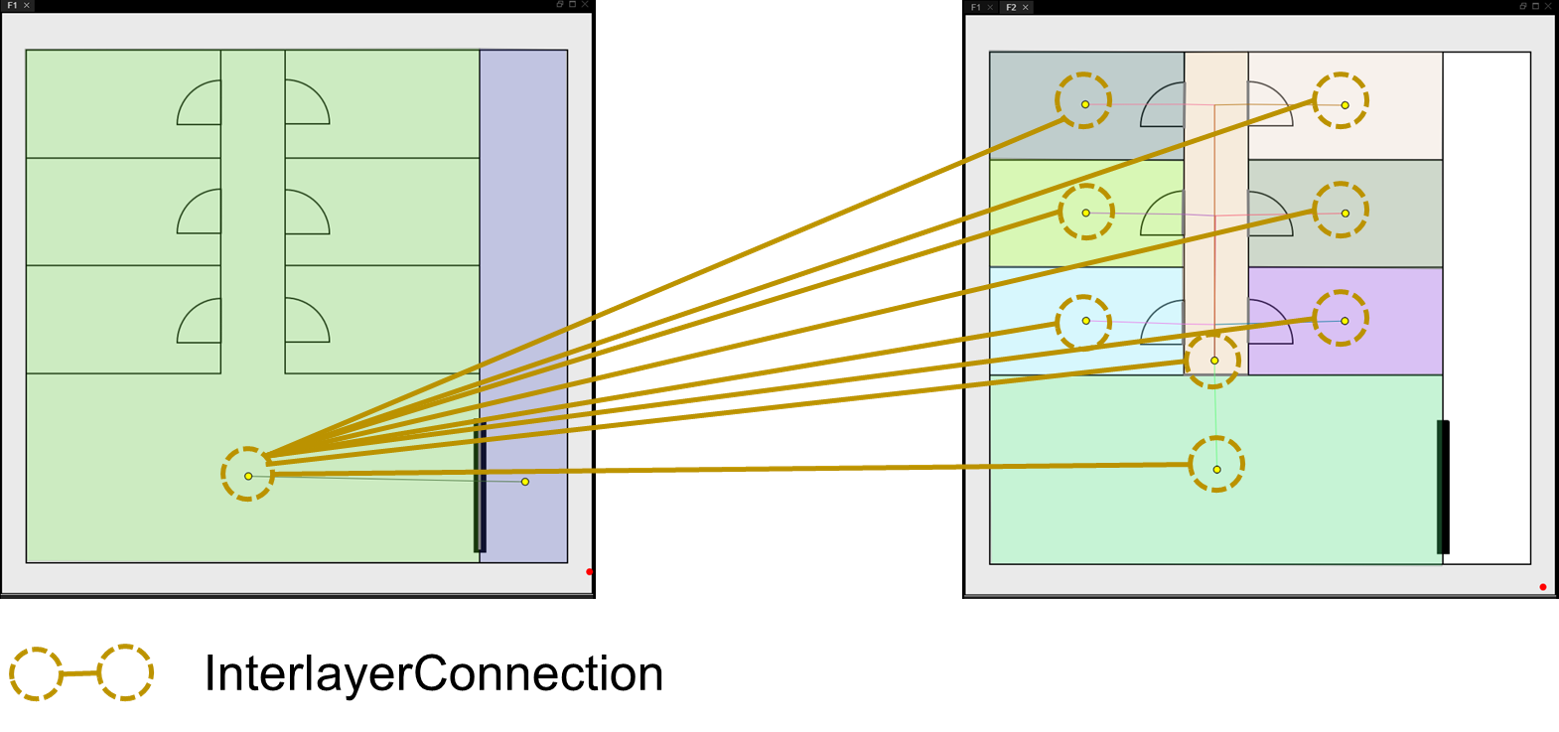 |
|
| 3 |  |
|
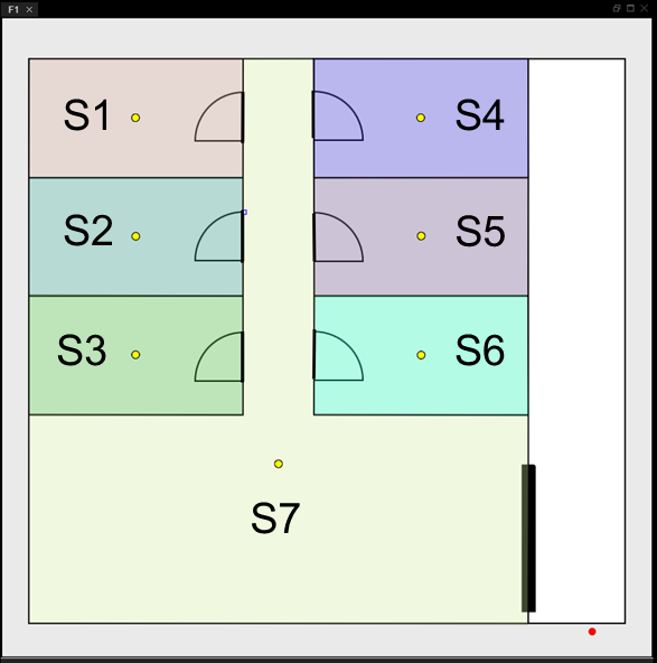
Based on the above figure, to move from S1 to S6, you should go along S1→S6→S7. However, this seems inefficient. This network will be more efficient if add a few more states.
- example
- Define a sublayer in a new floor as you did in the hierarchical structure, then connect the layer using InterlayerConnection.
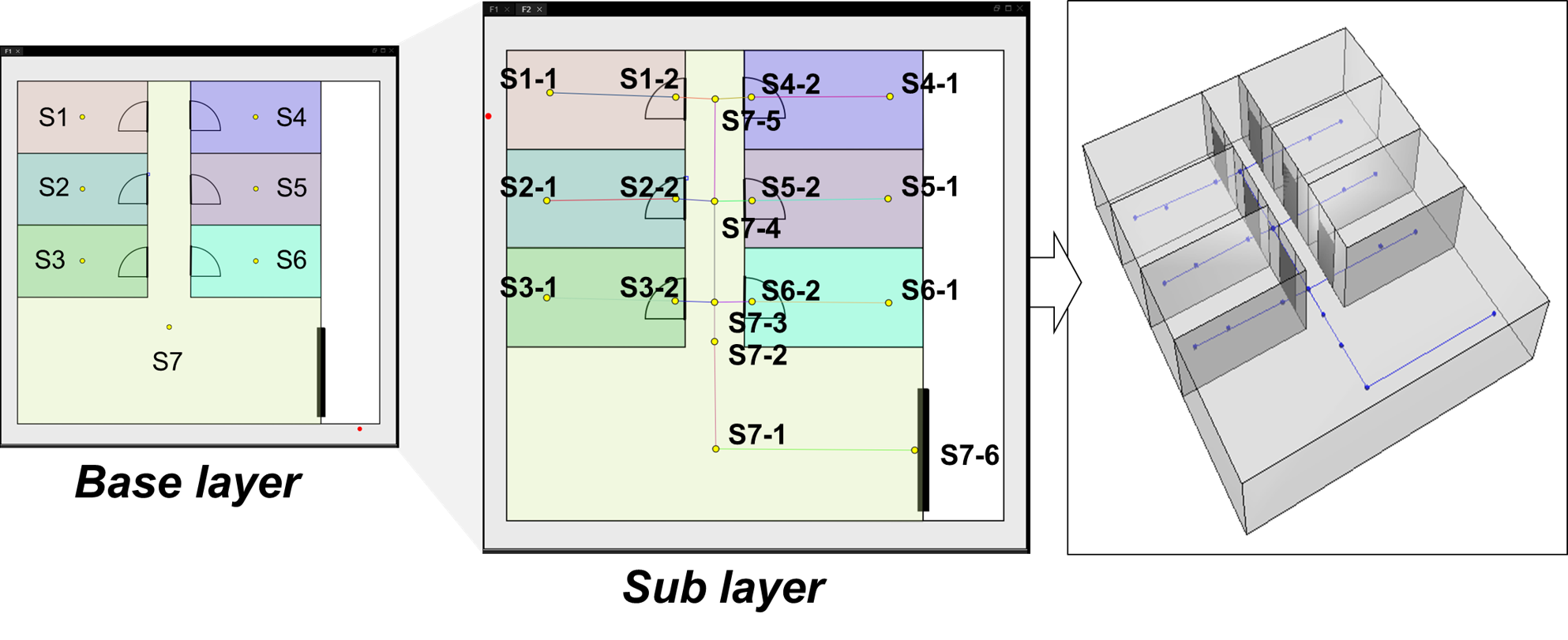
- Define a sublayer in a new floor as you did in the hierarchical structure, then connect the layer using InterlayerConnection.
- You can manage specific points of interest in the building, such as beacons, and sensor locations, as separate layers.
- example
